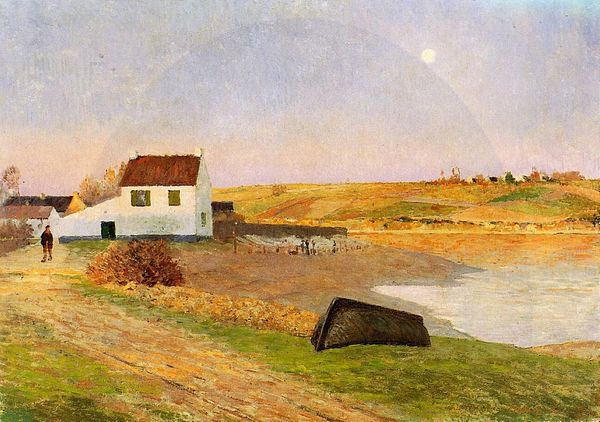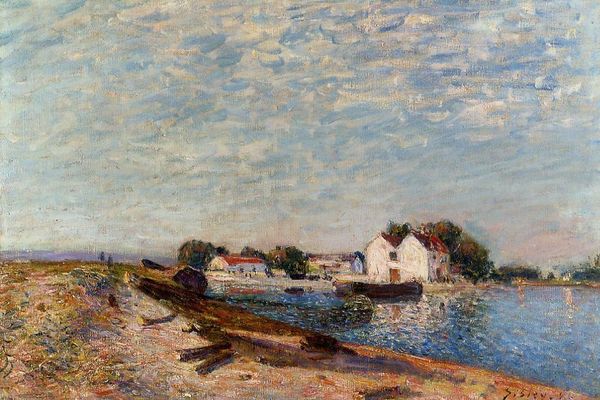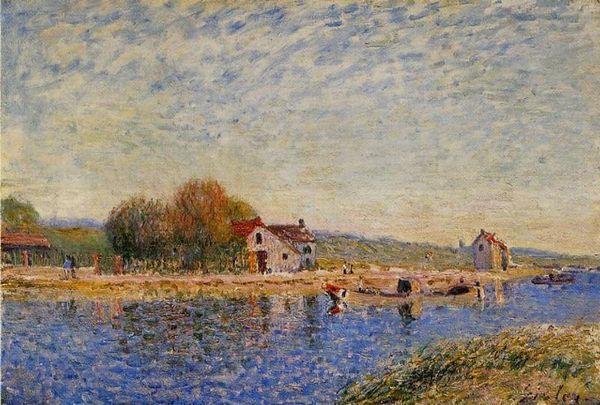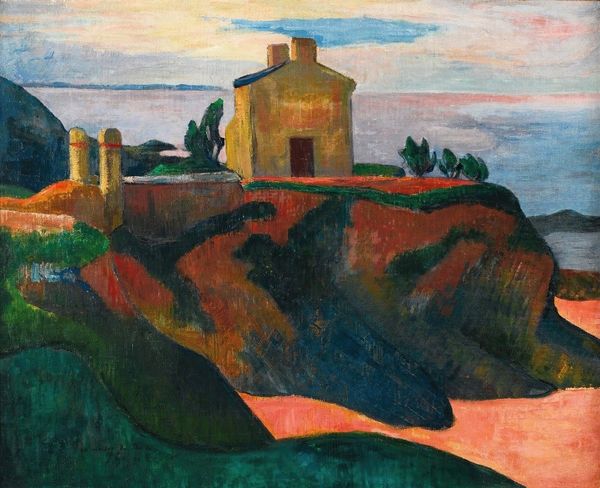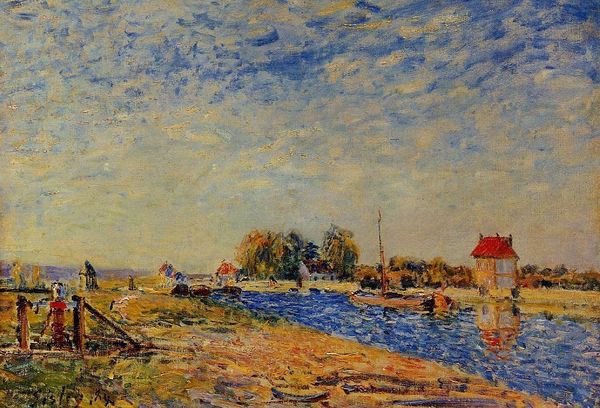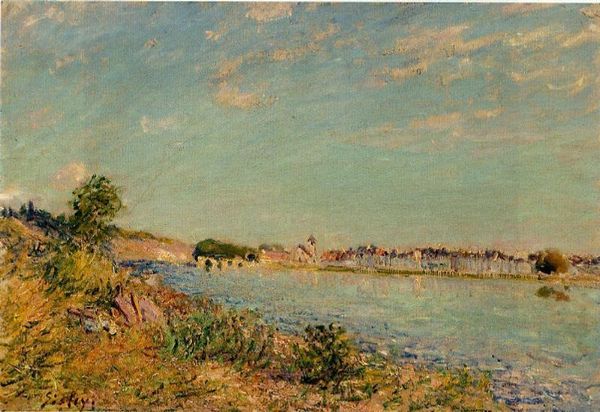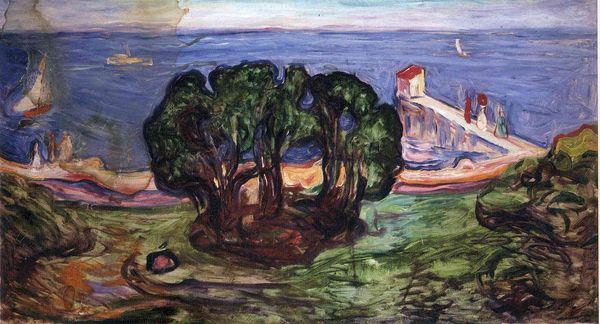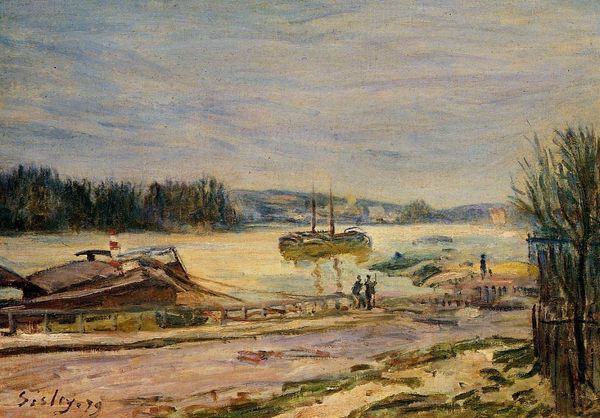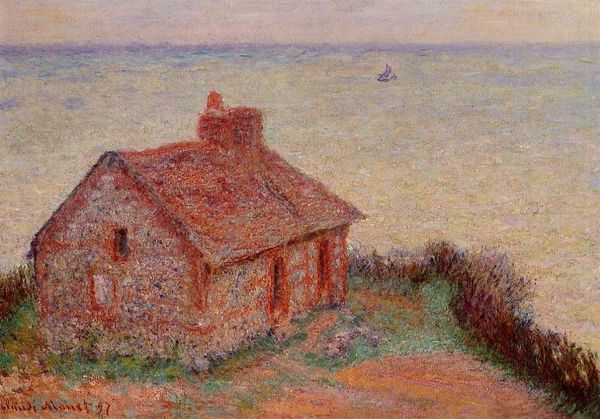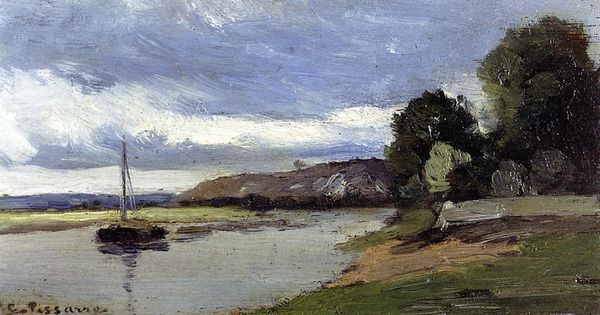
painting, plein-air, oil-paint
#
sky
#
painting
#
impressionism
#
impressionist painting style
#
plein-air
#
oil-paint
#
landscape
#
impressionist landscape
#
possibly oil pastel
#
oil painting
#
seascape
Copyright: Public domain
Editor: So, this is "View of Brittany," an oil painting by Renoir, possibly created en plein air. I find it really evocative; there's something so dreamlike and romantic about the way the colors blend together, creating this kind of hazy, nostalgic atmosphere. What do you see in this piece? Curator: I see Renoir engaging with a complex relationship between artistic vision and the market's expectations. Landscapes, though beautiful, often carried less prestige than portraiture during this period. "View of Brittany," therefore, speaks to Renoir's artistic freedom and also the developing taste for landscape within the rising middle class who began visiting and appreciating scenes such as Brittany. Doesn't the composition feel less concerned with topographical accuracy and more with conveying a certain impression, a *feeling* of the place? Editor: Yes, it does. It's more about the experience, not just documentation. It also looks like Renoir chose an interesting vantage point to highlight the house and how it contrasts with nature. Curator: Exactly! And the positioning of that house begs the question: what does "home" or dwelling signify in relation to nature at this historical juncture? The Industrial Revolution created stark division in the social and political landscape of Western Europe. How does Renoir's image perhaps offer a nostalgic glance at more harmonious, organic, even imagined or idealized relationship? Editor: So, you’re saying Renoir’s landscape might reflect socio-political concerns and a yearning for something lost during industrialization? It’s a statement? Curator: Possibly. These landscapes offered more than just aesthetic pleasure; they served as visual reminders, sometimes idealized, of a way of life increasingly threatened. Consider who these images were created for and what anxieties they might have soothed or reinforced. Editor: I hadn't thought about it that way. Seeing it as a product of and a response to industrial anxieties adds a whole new layer. Thanks for your insight! Curator: Absolutely. Considering the socio-historical context deepens our engagement with these works, and helps us understand the messages embedded within seemingly simple scenes.
Comments
No comments
Be the first to comment and join the conversation on the ultimate creative platform.
